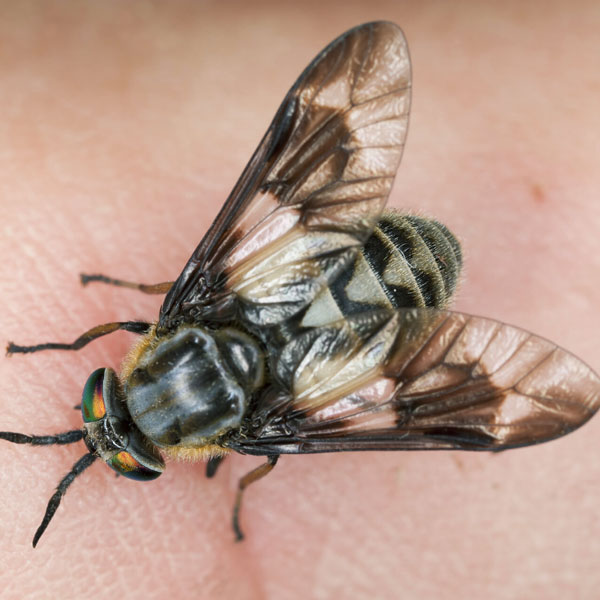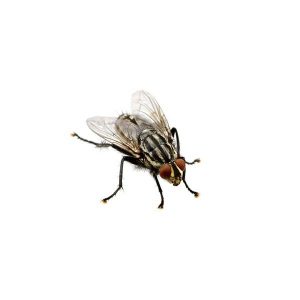Deer Flies in Georgia
Deer flies are usually green, brown, or yellow in color with stripes on the abdomen (back section of an insect). Their wings usually possess black spots or other blotchy patterns. Adult deer flies almost have a triangular shape compared to the bigger, more robust-looking horse flies. Adult female deer flies feed on mammal blood, though a couple of species do feed on nectar. Adult males feed primarily on nectar. The larvae of tabanids can be aquatic (water-dwelling), terrestrial (land-dwelling), or semi-aquatic (mixture of water and land-dwelling).
Deer Fly Habitat
Deer flies can be found near aquatic habitats that support larval development. Most deer flies are found in brushy or low-lying pasture areas near creeks, streams, or tanks that provide damp soils in which the immature stages develop. While they don’t typically enter buildings, deer flies can accidentally wander indoors from time to time. Houses or hotels with swimming pools could have more issues with the pest because shiny surfaces and quick movements attract deer flies to people.
Deer Fly Behaviors, Threats, or Dangers
These insects are major biting pests. Since the females feed on blood and are active during the day, it is not uncommon for humans to encounter an attack. The bite often results in visible bleeding wounds and general first aid-type skin creams may help to relieve the pain from bites. In rare instances, there may be allergic reactions involving hives and wheezing. There is evidence that a deer fly in the western U.S. is involved in the transmission of a bacterium that causes the disease tularemia, which is known as deer fly fever and rabbit fever. These flies are significant livestock pests with their painful and persistent biting behavior. Always contact your local fly exterminator for help with deer flies.
Need help with pest control?
Ready for your FREE quote?
Fill out the form below and we’ll be in touch!
*During normal business hours. After hours inquiries will be returned the next business day.





